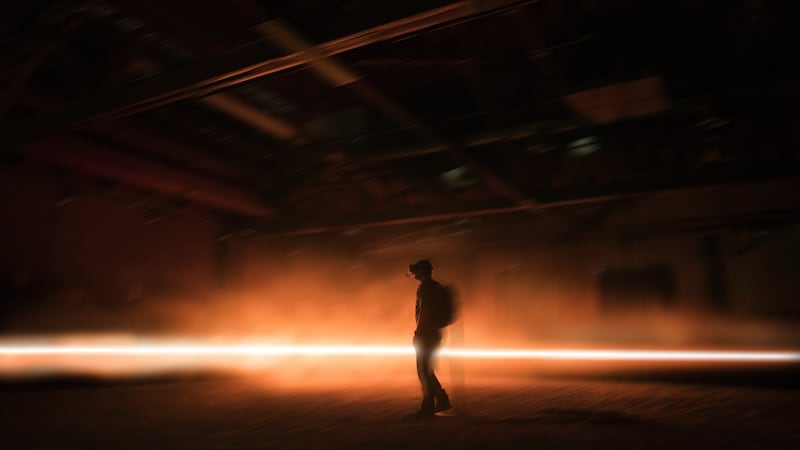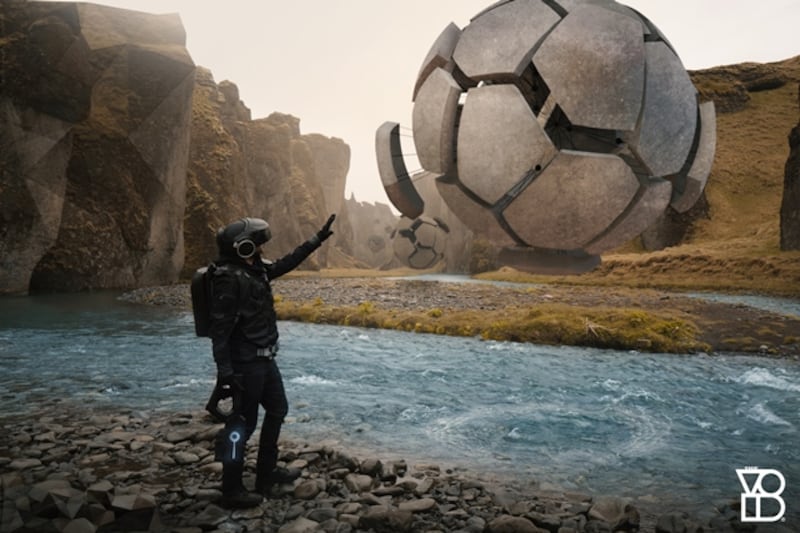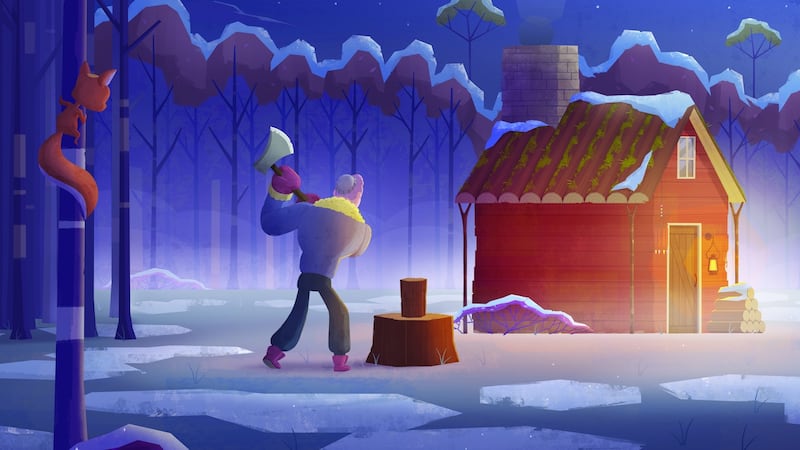Virtual reality is coming to the Audi Dublin International Film Festival, which will host a two-day conference on the future of entertainment built within artificial universes. Titled Immersive Stories, the bash welcomes representatives from such players as Lucasfilm, Oculus VR the VOID and Industrial Light and Magic. Aoife Doyle and Niamh Herrity, founders of the Irish studio Pink Kong, who were recently awarded a bursary of 30,000 by Audi Ireland, ADIFF and Screen Training Ireland, will present their VR short Aurora.
Eoghan Cunneen, a senior software engineer at Lucasfilm, curates the event for ADIFF. Speaking to me from his office overlooking the Golden Gate bridge, he enthuses about the possibilities.
“This is the first time that the festival has done a virtual reality or augmented entertainment event,” he says. “There’s an exhibition with virtual and augmented reality applications for people to try. Then we have the conference: ‘How are storytellers using these new platforms? How are we giving people different perspectives?’ ”
The digital buzz tells us that virtual reality is about to matter very much. Technology is getting quicker and cheaper. Google, Sony, Amazon, Microsoft, Samsung and Apple have all invested eye-watering sums in their augmented and virtual reality divisions. It's the Next Big Thing. Right?
Virtual Murder
We have been here before. More than once. Those in the business will, I imagine, be sick to death of cynics pointing to a notorious 1993 episode of Murder, She Wrote in which Jessica Fletcher was asked to help design a virtual reality game. Wearing a headset eerily similar to the ones now sold by Samsung or Stealth VR, Angela Lansbury gamely got aboard the Zeitgeist Express. "It's partly a game, partly an environment," Jessica explained. "Suddenly you're in this world that exists only in a computer, except it feels quite real. It's a bit disorienting, as if you're visiting this strange, almost alien space." Every word could appear in a blurb explaining the current incarnation.
Around the same time as that episode was broadcast, I visited an arcade called Virtual World in Pasadena to play a "virtual-reality" version of the combat game BattleTech. The inverted commas in the previous sentence are worth heeding. Not virtually real in any contemporary sense, the BattleTech pods allowed you to fight with friends while sitting in something a little like a cockpit. Atari's Battlezone from over a decade earlier was only marginally less real. Nonetheless, the buzzwords were in place. Virtual Reality was about to happen.
It didn't quite work out. Those words never went away. Various versions of the headsets were employed in occasional efforts to reignite the non-craze. The technology was used to train pilots and astronauts. But it wasn't until the middle of the current decade that we were again informed that VR had achieved Next Big Thing status. You all saw that nauseating "virtual reality night with mam" Vodafone commercial. Yes?
Last May, when visiting the Cannes Film Festival, I was driven to a hangar beside the town's small airport, stripped of my shoes, equipped with a headset-backpack combo and propelled into a space lined with rough sand. Alejandro G Iñárritu's Carne y Arena places you near the border between the US and Mexico as the American authorities apprehend a group of immigrants.

The experience is uncanny. Visitors find themselves ducking as helicopters sweep overhead. It feels intrusive, awkward and unsettling. In October, it was confirmed that Iñárritu (who was there to greet us in the hangar) would be awarded a special Academy Award "in recognition of a visionary and powerful experience in storytelling". Something is definitely happening.
Eoghan Cunneen, one of our nation's under-celebrated stars, has worked on visual effects for such pictures as Paddington, Edge of Tomorrow and Gravity. He was also a senior software engineer on Carne y Arena. So why should we take notice this time? What do we know now that Jessica Fletcher didn't know 25 years ago?
“The main contributor to this is mobile devices,” Cunneen says. “We have high-powered computing products that fit in your pocket. More importantly, research and development has gone into the display itself. We can pack so many more pixels into the core device. The level of fidelity of the screen is such that we are able to offer very compelling images.”
And yet. Engineers like Eoghan have so spoilt us that the images provided by high-high end VR such as Carne y Arena seem a tiny bit less vital than those in, say, The Last Jedi or War for The Planet of the Apes.
“The difficulty is we are seeing this side by side with the progression of computer graphics in feature films,” Cuneen says patiently. “Feature film has the luxury that when we are creating images we don’t need a refresh rate of 90 frames a second. Often it takes hours to render a frame of a feature film.”

Sharper and brighter
That will change. As Eoghan notes, the computer graphics on films from just five years ago can already seem dated. The images used for virtual reality will become sharper and brighter. That fast frame rate should ensure that the nausea occasionally induced by the old headsets will no longer be a problem.
By titling their event “Immersive Stories”, ADIFF is indicating that there is more to the current movement than what we used to understand by virtual reality. Definitions are slippery.
Cuneen speaks of three "tiers of immersion". In virtual reality, you are wearing a headset that covers each eye separately. There is no chance of the external world encroaching. One tier down we have the "mixed reality" that the forthcoming Magic Leap headset hopes to exploit. Computer graphics are imposed onto the world in front of you; those graphics convey a sense of depth that will alter as the user moves around the rendered object. We have already had a media furore around the lowest tier of immersion. A year and a half ago, the world was engulfed with panic when Pokémon Go – which employs so-called "augmented reality" – threatened to bring western civilisations to its knees. (Surgeons were allegedly abandoning heart transplants to chase rare Pokémon about the corridors.) In this case a less flexible image is locked onto the screen.
It is becoming clear that, as well as supplementing familiar entertainments such as cinema and videogames, these tiers of immersion are inspiring whole new media. One could reasonably ask if Carne y Arena is within the Academy of Motion Picture Arts and Science's remit. After all, they don't give awards for telly or videogames. The technology is going off at oblique angles.
“Yes. You can maybe go to Disney World,” Cuneen says. “There will be a Star Wars land there in 2019 or 2020. I can maybe go and engage with characters there. I can be physically there in that world.”
Festival on the couch
VR now allows punters to experience Glastonbury from less-muddy corners of the world. The Coachella music festival outside LA has inspired a virtual version wittily (and inevitably) dubbed “Couchella”. You can do anything with the medium. Maybe it is the next VHS. Maybe it is the next internet. Such musings do, however, push us in an uncomfortable direction. We knew the web and video had really arrived when they became funnels for pornography. The sex industry is unsentimental and unmoved by hype. Does Cuneen think that VR porn is on the way?
“Yes,” he says without hesitation. “I worked in Soho in London for a long time. That area was built on that. It is what it is. That is going to be a huge component and it’s going to be a huge money-spinner.”
Is it already here?
“Almost certainly.”

There will be none of that sort of thing at Immersive Stories. Aoife Doyle and Niamh Herrity, founders of Dublin's innovative Pink Kong studio, are here to demonstrate that the new immersive media are not just there for massive players like Lucasfilm. The bursary from Audi offered them an opportunity to accelerate their work on a short film (is that still the word?) called Aurora.
“It’s a story about a young family based in a forest clearing,” Aoife says. “It follows them through day to night, spring to winter, life to death. We want the audience to reflect on the notion that time can be fleeting and fickle.”
They go on to explain how the user can interact with the wildlife. If you disturb a deer, it will leave sooner than if you leave it alone. The viewer is becoming a player in the story.
“As the technology advances, that means the price within the market comes down,” Niamh continues. “We are also seeing that Oculus and Vibe are bringing out technology that is tetherless. You no longer have wires.”

All of which sounds convincing. But there must still be some possibility that the current VR craze will go the way of the first mini-boom in the early 1990s. Remember when the interactive CR-Rom was set to boss popular culture. Might VR fail to happen (again)?
“Yeah. I think so,” Eoghan says bravely. “It may be case of: do I buy this headset or that headset? There may be more immediate applications of using mixed reality experiences than virtual reality. There’s always going to be that fear.”
At the close of A Virtual Murder, Jessica Fletcher contemplates a flower and wonders whether "a computer can ever be programmed to enjoy something as simple and beautiful as this".
Put a sock in it, Fletch. If earlier innovators had entertained that attitude we'd never have got Grand Theft Auto.
- Immersive Stories takes place on February 24th and 25th in the Round Room at the Mansion House, Dublin. See diff.ie
VIRTUAL REALITY: A TIME LINE
1955: Morton Heilig proposes the Sensorama, a device that offered the viewer 3-D, body tilting and "aroma". It actually worked.
1961: The Philco Corporation devises a helmet called Headsight that incorporates playback and a head-tracking system.
1980: The awesome arcade game Battlezone draws the viewer in with 3-D vector graphics.
1982: The movie Tron depicts virtual reality on the big screen.
1991: The Electronic Visualization Laboratory creates the Cave, the first cubic immersive room.
1993: Sega introduces its VR wrap-around glasses. Jessica Fletcher experiences VR on Murder, She Wrote.
1999: The Matrix offers further dystopian possibilities for virtual reality.
2010: Palmer Luckey unleashes the first prototype of Oculus Rift, the next generation of VR headsets.
2014: VR is back. Sony announces Project Morpheus for the Playstation. Facebook acquires Oculus for $2 billion. Google announces Cardboard, a stereoscopic viewer for smartphones.
2018: Steven Spielberg releases his VR epic Ready Player One.











